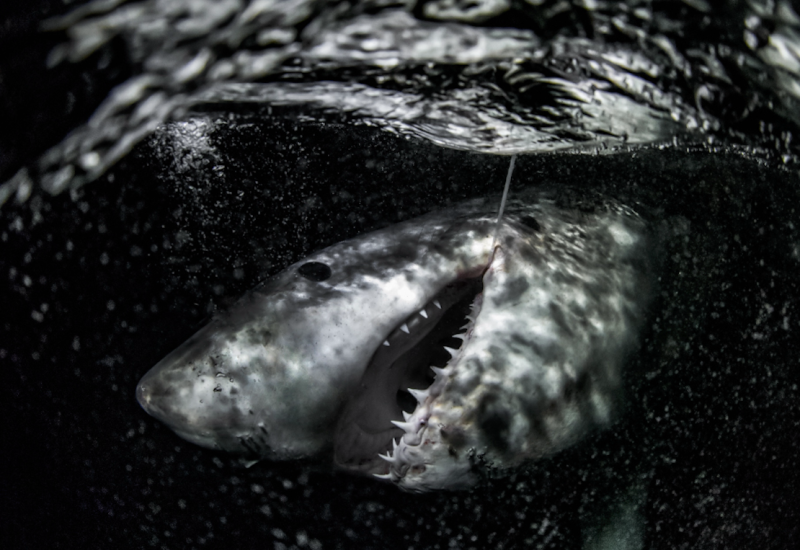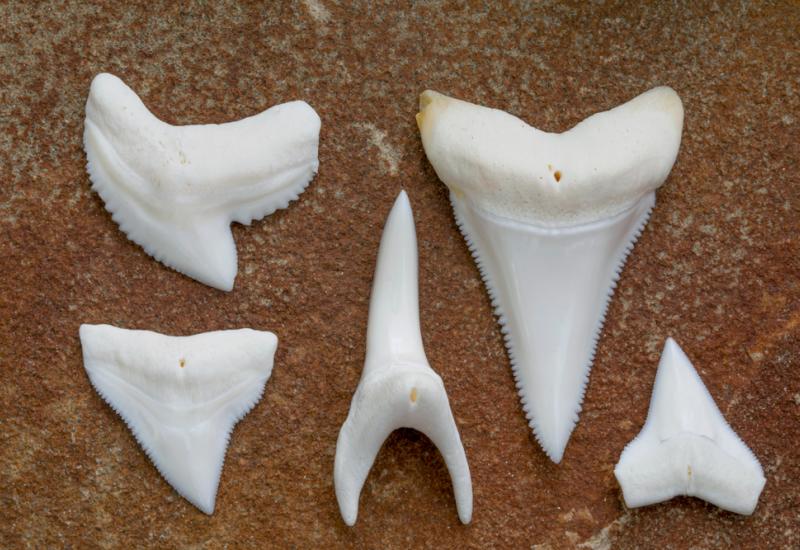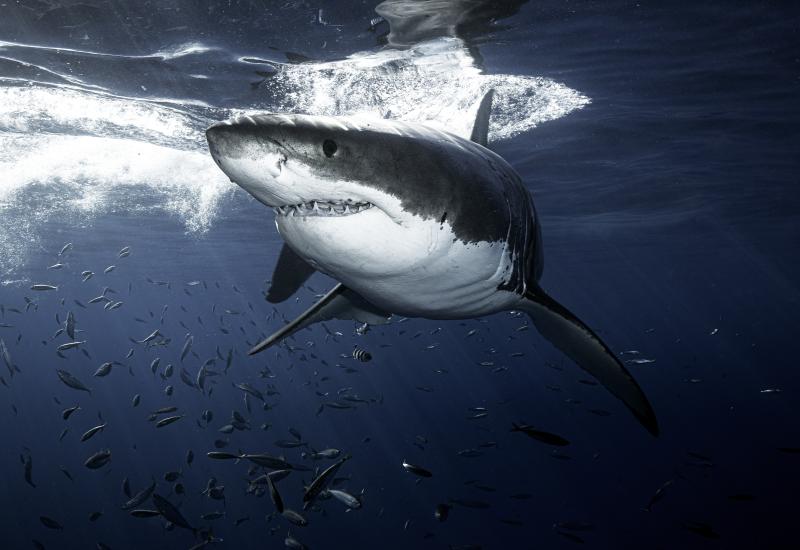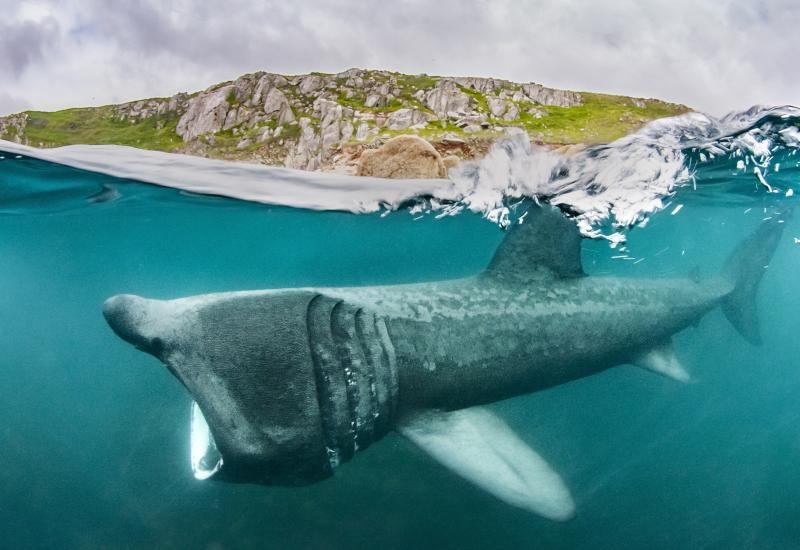Tagging Great White Sharks to Study Migrations, Behaviors & Twitter Followers
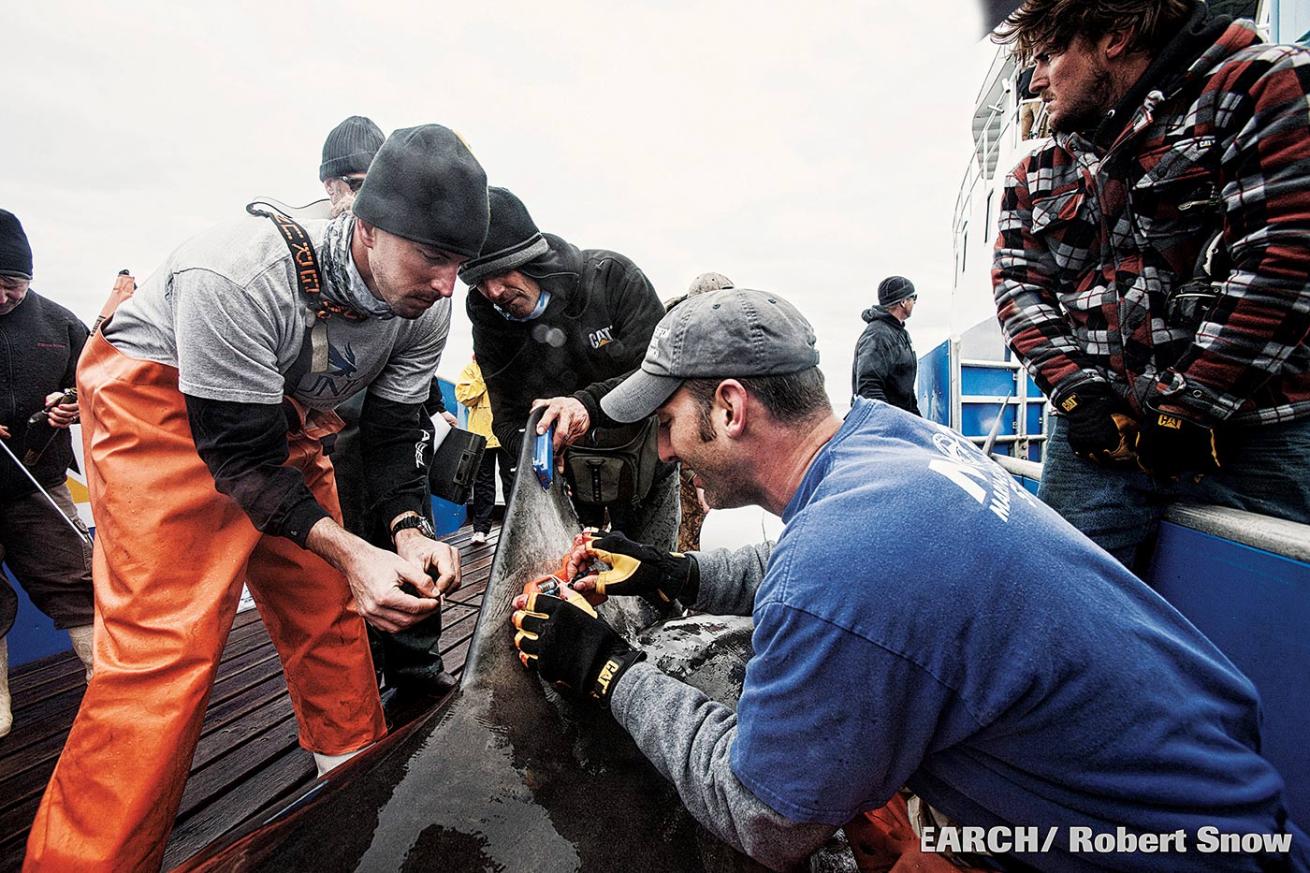
Courtesy OCEARCHOcearch team members tag great whites to track their migratory patterns.
Though great whites are arguably the most famous — albeit infamous — of all shark species, data on these apex predators has been unavailable to scientists. But thanks to Ocearch and the viral nature of digital content, knowledge on the elusive predators is spreading across the globe via social media at lightning-fast rates. Under the direction of founder and expedition leader Chris Fischer, Ocearch has been tagging and tracking great white sharks throughout the world’s oceans to gain vital information on their behavioral, migratory and mating patterns. A team of fishermen and scientists works symbiotically to catch, measure, tag and record data on each of the sharks they find — all of which is done in 15 minutes.
Once the details have been recorded, the shark is released, unharmed, resuming its typical behavior within a couple of hours. From this point forward any time the shark’s fin breaks the surface, the tag sends a signal to an overhead satellite, which then returns an estimated geolocation.
In a unique approach to data sharing, Ocearch makes the location information immediately available to the public via an interactive Global Shark Tracker. Created by Fischer in 2012, the tracker has hosted migration patterns for dozens of great white sharks, all of which are searchable using the shark’s name.
“We’re solving the life-history puzzle of Jaws — this could be the all-time coolest ocean science project ever. By open-sourcing the tracking, the whole world can be involved at the same time,” Fischer says.
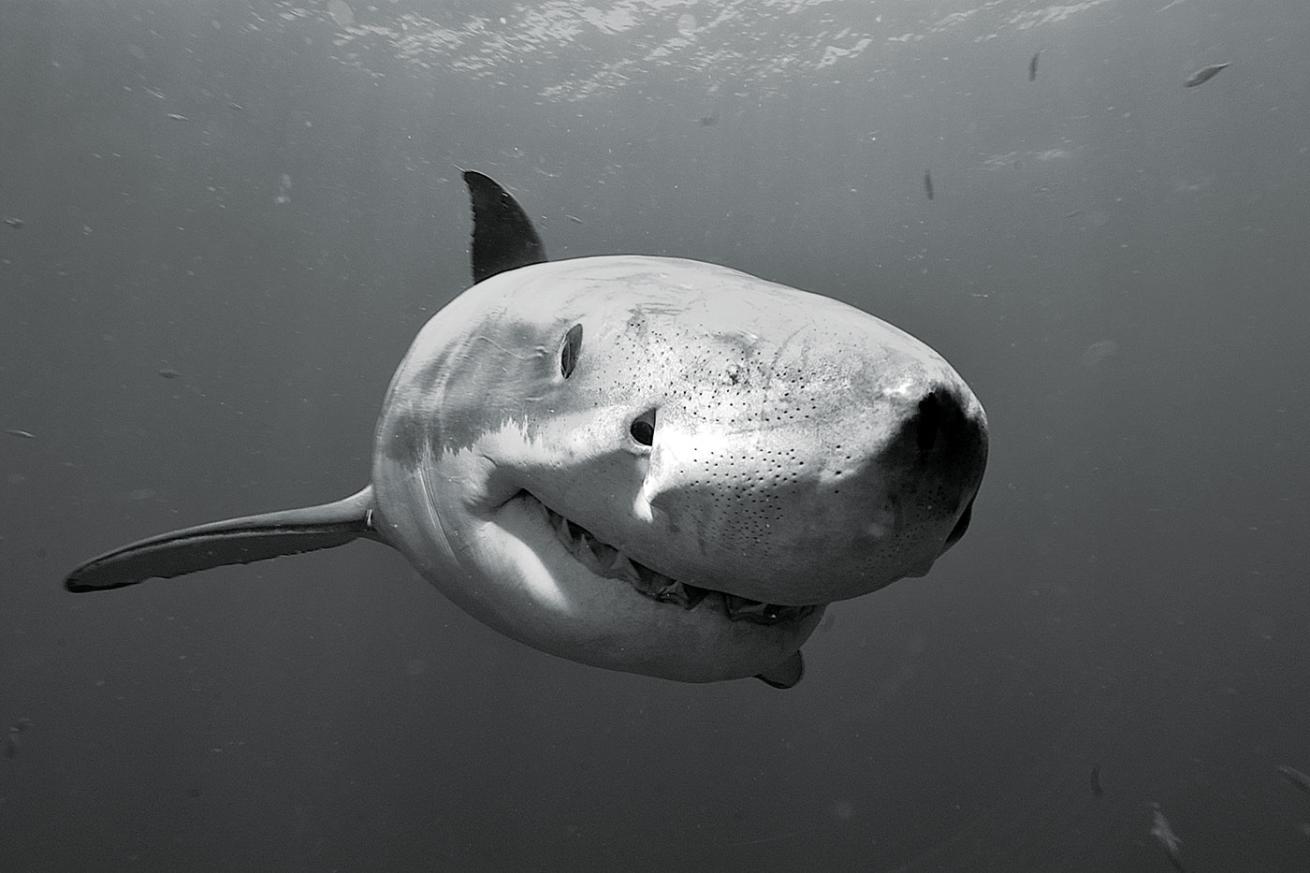
Courtesy OCEARCHGreat white sharks are being tagged for science by Ocearch. The sharks now have Twitter accounts made by their fans.
The real-time updates on the sharks’ travels have garnered a following not only on the tracker, but on social media as well. The best-known of these are the Twitter-famous Mary Lee, Lydia and Katharine.
Sharing location updates, humorous anecdotes and fun facts, the Twitter handles for the sharks have helped the need for conservation become a mainstream issue. The Twitter personalities seamlessly complement the shark tracker, but they do not belong to Ocearch. Instead, the accounts belong to unaffiliated shark enthusiasts with a knack for hashtags.
“By and large, most of the sharks’ accounts are handled by organic shark lovers,” Fischer says. “We identified the owners to establish a common set of values to make sure the tweets are data-driven and science-focused. Ocearch belongs to everyone, and Twitter is another means of bringing total inclusion.”
Since 2007, the Ocearch team has completed more than 20 expeditions and tagged nearly 300 sharks, including makos, tigers, hammerheads and, of course, white sharks.
The data collected from the shark-tagging programs is slowly being released in a series of scientific papers, but it has already helped to achieve greater understanding of these white sharks.
“We know Isla Guadalupe is a mating site, and by following several mature great white sharks, we now know that they return to the same area every time they give birth,” Fischer says.
The remaining 2016 expeditions focus on locating more nurseries and mating sites in the North Atlantic .It’s in these areas that juvenile sharks fall victim to bycatch, and therefore where improved protection of white sharks is crucial to ensure their survival — and the survival of the ocean.
“The sharks are the lions of the ocean: apex predators, sentinel species, balance keepers. If we lose the sharks, the second tier of the food chain explodes and wipes out the whole thing,” says Fischer.
By year’s end, Fischer and the team plan to complete 26 total expeditions. Following that, he will transition into advocating for policy change in hopes of rebuilding global shark populations.
“I think our policy and advocacy years are really starting to come as we mature as an organization and all the initial science we enabled starts to get published so we can leverage it to protect sharks. The exploration will continue, but it has to end in policy changes. Otherwise, what are we doing it for?”
NEED MORE SHARKS?
25 Best Shark Dives
Shark Videos, Photos and Facts
MEET THE SHARKS THAT TWEET
KATHARINE | @Shark_Katharine
Length 14 feet 2 inches
Weight: 2,300 pounds
Tag Date: Aug. 20, 2013
Tag Location: Cape Cod, Massachusetts
LYDIA | @RockStarLydia
Length: 14 feet 6 inches
Weight: 2,000 pounds
Tag Date: March 3, 2013
Tag Location: Jacksonville, Florida
MARY LEE | @MaryLeeShark
Length: 16 feet
Weight: 3,456 pounds
Tag Date: Sept. 17, 2012
Tag Location: Cape Cod, Massachusetts

